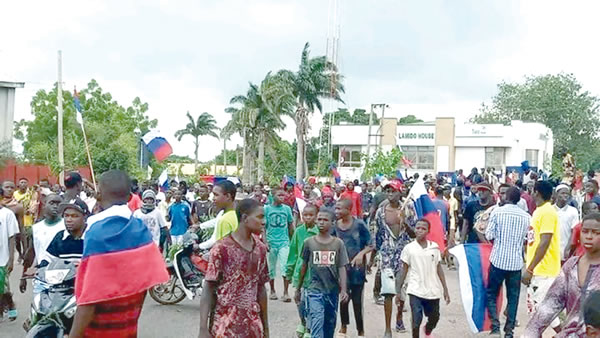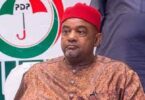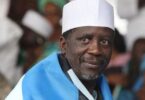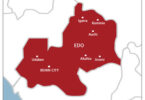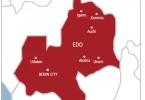Northern Bureau Chief, MUHAMMAD SABIU, reviews the violent protest that rocked some states in the North and the damage the protesters wrought and reasons for their anger.
NIGERIA has witnessed several peaceful and moderately violent protests. And in each of these protests, the events happened simultaneously in all the six geopolitical zones. However, the August 1st protest, which kick-started a 10-day agitation across the country, was not so. First, the organisers of the protest were faceless. Even though they hinted that they would embark on a 10-day protest starting from August 1st, in reality, the regions were not on the same page. In other words, every region conducted the protest according to its interest.
Findings revealed that people in the South-West thought they were on the streets, the protest only took place in Lagos, Oyo, Osun and Ogun states. Protesters were seen with placards expressing their disenchantment with the present administration of President Bola Ahmed Tinubu.
While the anti-Tinubu hunger protest was going on, another set of protesters, allegedly sponsored by the government, also took to the streets to canvass for support and more time for the government to deliver on its election promises. Indeed, the pro-government protesters, who were more visible in the Federal Capital Territory Abuja, some parts of Lagos even commended government for its intervention and progress they claimed it has made. Though they admitted that Nigerians are sufferings, the pro-government campaigners argued the president needed the support of the regions. But throughout the period of the protest, there was no case of vandalism, arson and/or killings like in the Northern region.
The South-East is perhaps the only region that shunned the protest totally. Defending their position, Vice-President of the Ohanaeze, Damian Okeke Ogene, had said in a statement that the region decided to shun the protest because of what the region suffered from past protests and did not want to be made the scapegoat.
According to him, “we usually bear the brunt,” adding, their indifference was not an admission that things were with Nigeria. “We are not saying all was right. We are also facing what others are facing,” he said, adding that the South-East believed in the leadership of late President-General of Ohanaeze, Emmanuel Iwuanyanwu, who asked the Igbos before his death on 25 July to shun the protest to avoid being made the scapegoats.
In the South-South, apart from the August 1 outing in Agbor, Delta State, where youths blocked the highway to Benin, Asaba and Onitsha, only Rivers State recorded fierce protest. The state was already embroiled in a political crisis involving current Minister of Federal Capital Territory, who is also the immediate past governor of the state, Nyesom Wike and his erstwhile, political son, and current governor of the state, SiminalayiFubara. The tussle is about who controls the resources and political machinery of the oil-bearing state.
However, it was not so calm in the North. The protest witnessed wanton destruction of properties and bloodshed. A dangerous introduction to the protest was the display of a foreign flag by the angry youths.
Though it is normal for protesters to carry the flag of their country, the impact of the End Bad Governance protest was something else. With some of the angry protesters bearing Russian flag, they descended on places in Kaduna, where they destroyed one of the first-generation banks in the Tudun Wada area.
Spokesman of Kaduna State Police Command, Mansir Hassan, confirmed how the protesters broke into the bank, carted away some valuables and also destroyed some vehicles parked within the bank premises. Hassan, an Assistant Superintendent of Police, also related how the protesters attempted to hijack a police armoured personnel carrier at Tundun Wada area by climbing on top of the vehicle since it was carrying live ammunition. The driver, he explained, who couldn’t have used maximum force against the crowd, had to professionally resist them.
The police also confirmed the burning down of a security patrol vehicle belonging to the Kaduna State Vigilance Service at Rigasa in the Igabi Local Government Area of the state as well as the razing of the Zaria office of the Kaduna State Traffic Law Enforcement Agency (KASTLEA) by the hoodlums. Also vandalized was the headquarters of the Kaduna Investment and Promotion Agency (KADIPA), where valuables were carted away. Similarly, at Kastella headquarters the hoodlums carted away hundreds of seized motorcycles including tricycles.
The protest was not without its casualties. There were reported cases of killings in some parts of the state. No fewer than 10 people were said to have lost their lives including an 18-year-old Ismail Mohammed who was gunned down by a trigger-happy soldier in a bizarre manner in their home at HayinDogo in Zaria.
The protest was not limited to Kaduna State as other states, particularly in the North-West zone got a taste of youth’s red fury. In Kano State, the NCC digital skills centre office was vandalized by the protesters, who reportedly that they carted away over 300 computers at the centre. Also, in Niger State, there were reported cases of two teenagers killed during the protest. In Zamfara, both public and private properties of citizens were not spared by the protesters while they similarly vent their anger on some politicians they perceived as not helping their people. Two lawmakers in Jigawa and Yobe states were some of their targets as well as some other residents, who claimed their valuables were looted by the rampaging youths.
One of such victims is Mrs Chinaso Obi who lives in Sokotoroad,Kaduna metropolis. According to her, her apartment was vandalized by some of the protesters. She said they stormed her residence and looted her valuables. “The hoodlums broke into my house and carted away my items. They packed my TV; they removed my deep freezer’s compressor.
“Everything useable in the house was looted in my house. They packed everything including my clothes and shoes,” she narrated.
But why were the protesters angry? Some individuals who spoke to Sunday Tribune revealed that the North, especially young people, was angry with the president over the removal of fuel subsidy. They had expected him to announce the restoration of the subsidy or review it when he took over the government from Muhammadu Buhari. Most of them, Sunday Tribune learnt, were disenchanted because the cost of fuel which is now N900 per litre and has made the cost of transport very expensive, therefore forcing up the prices of food and other items.
Malam Abubakar Saad, who also joined in the protest, told Sunday Tribune how the removal of fuel subsidy had particularly affected him, saying “you can’t remove subsidy when you did not provide an alternative. We expected the president to do the needful before he announced the fuel subsidy removal,” but according to him, the president did not do the needful but went ahead to remove the subsidy arbitrarily.
Though there are other reasons, hunger is perhaps the most crucial, according to a female protesters who pleaded for anonymity. “Scarcity of food has hit most communities and is now very expensive,” she explained, claiming she joined the protest because she could no longer bear the economic hardship.
Another reason the youth are angry and by extension the North is the intractable insecurity bedevilling the region. Some of the placards the protesters bore said as much. Inscriptions like “Enough of this killings”; “We are sufferings. Our farmlands have been taken away by bandits “, “We say No to insecurity”; “We say No to Boko Haram, Banditry, Kidnapping and terrorism in our region” graphically described how they felt about the situation of the region.
One of the aggrieved youths in an interview said that thousands of innocent souls were killed, women, including young girls, had been raped by the bandits. “Our communities have been wiped away. When will this carnage end?” he asked.
Worried about the situation in the North, a non-government organisation, Advocacy for Advancement of Peace &Harmony in Africa Initiative (ADAPHAI), urged political leaders as well as other leaders of thoughts in the region to quickly wake up to their responsibilities to avert imminent explosion through violent revolt by the majority of idle youths.
ADAPHAI, in a statement signed by its national coordinator, Comrade Sulaimon Suberu, was alarmed by the raw anger displayed by the protesters as well as destruction they did to public infrastructure. The group said the looting spree and level of vandalism recorded in the North was a total departure from the notion behind the nationwide strike, but a reflection of a volatile society of the North, where the majority of the youths are practically uneducated and idle.
READ ALSO: LG chairmen, councilors to enjoy four-year tenure — Supreme Court

